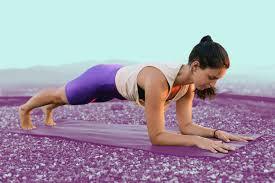A strong core is the foundation of a healthy, fit body. It’s not just about having a flat stomach or six-pack abs; core strength and stability are crucial for nearly every movement we make, from daily activities like bending and lifting to athletic performance in sports and exercise. A well-developed core improves balance, posture, and overall body mechanics, reducing the risk of injuries and enhancing physical performance.
In this article, we’ll explore the best exercises for building core strength and stability, focusing on movements that target the deep muscles of the abdomen, lower back, hips, and pelvis.
Understanding Core Strength and Stability
Before diving into the exercises, it’s important to understand what we mean by “core.” The core includes more than just the visible muscles of the abdomen (the rectus abdominis). It also encompasses the transverse abdominis, internal and external obliques, erector spinae, multifidus, and the muscles of the pelvic floor and diaphragm. These muscles work together to stabilize the spine and pelvis during movement, providing a solid base for the rest of the body.
Core strength refers to the ability of these muscles to generate force, while core stability involves maintaining balance and control of the torso during dynamic movements.
The Best Core Strength and Stability Exercises
Here are some of the most effective exercises for developing core strength and stability. These movements can be performed at home or in the gym, with minimal equipment needed.
1. Plank

- Why It Works: The plank is a foundational core exercise that targets the entire core, including the rectus abdominis, transverse abdominis, and obliques. It also engages the shoulders, chest, and lower back.
- How to Do It: Start in a forearm plank position with your elbows directly under your shoulders, forearms flat on the ground, and feet hip-width apart. Engage your core, glutes, and legs, keeping your body in a straight line from head to heels. Hold the position for 20-60 seconds, depending on your fitness level. Avoid letting your hips sag or raising them too high.
2. Dead Bug
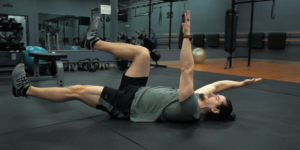
- Why It Works: The dead bug is a great exercise for improving core stability while minimizing the risk of lower back strain. It helps strengthen the deep core muscles, particularly the transverse abdominis.
- How to Do It: Lie on your back with your arms extended toward the ceiling and your knees bent at 90 degrees. Engage your core and press your lower back into the floor. Slowly lower your right arm and left leg toward the ground while keeping your lower back flat. Return to the starting position and repeat on the opposite side. Perform 10-15 repetitions on each side.
3. Bird Dog
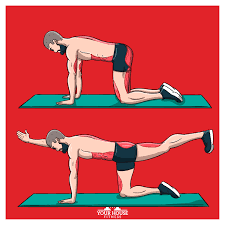
- Why It Works: The bird dog exercise targets the core, lower back, and glutes, improving balance and stability. It also promotes coordination between the upper and lower body.
- How to Do It: Begin on your hands and knees in a tabletop position, with your wrists under your shoulders and knees under your hips. Engage your core and simultaneously extend your right arm forward and left leg back, keeping your hips level. Hold for a few seconds, then return to the starting position. Repeat on the other side. Perform 10-15 repetitions on each side.
4. Russian Twists

- Why It Works: Russian twists are effective for strengthening the obliques and improving rotational stability. This exercise also engages the rectus abdominis and transverse abdominis.
- How to Do It: Sit on the floor with your knees bent and feet flat. Lean back slightly while keeping your back straight. Hold a weight or medicine ball with both hands, and rotate your torso to the right, bringing the weight beside your hip. Return to the center and rotate to the left. Perform 15-20 repetitions on each side.
5. Glute Bridge
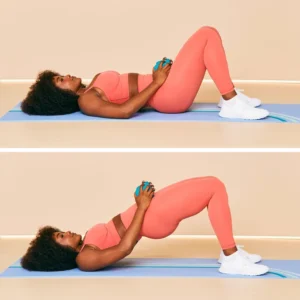
- Why It Works: The glute bridge primarily targets the glutes and hamstrings, but it also engages the core, particularly the transverse abdominis and lower back muscles. It’s an excellent exercise for improving core stability and lower body strength.
- How to Do It: Lie on your back with your knees bent and feet flat on the floor, hip-width apart. Engage your core and press through your heels to lift your hips toward the ceiling, forming a straight line from your shoulders to your knees. Hold for a few seconds, then lower your hips back down. Perform 15-20 repetitions.
6. Side Plank
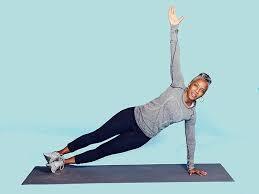
- Why It Works: The side plank is a challenging exercise that targets the obliques, transverse abdominis, and the muscles along the sides of your body. It also improves shoulder stability and balance.
- How to Do It: Lie on your side with your elbow directly under your shoulder and your legs stacked on top of each other. Engage your core and lift your hips off the ground, creating a straight line from head to heels. Hold the position for 20-60 seconds, then switch sides.
7. Mountain Climbers
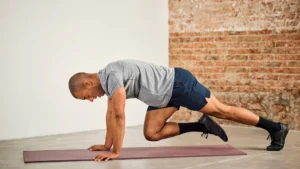
- Why It Works: Mountain climbers are a dynamic exercise that combines cardio and core work. They target the rectus abdominis, obliques, and hip flexors, while also improving cardiovascular endurance.
- How to Do It: Start in a high plank position with your hands directly under your shoulders. Engage your core and bring your right knee toward your chest, then quickly switch legs, bringing your left knee toward your chest. Continue alternating legs at a rapid pace, keeping your hips level. Perform for 30-60 seconds.
8. Hollow Body Hold
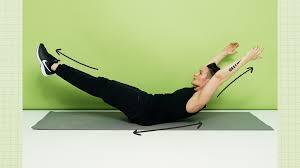
- Why It Works: The hollow body hold is a gymnastics-inspired exercise that challenges the entire core, particularly the rectus abdominis and transverse abdominis. It’s great for building core strength and stability.
- How to Do It: Lie on your back with your arms extended overhead and your legs straight. Engage your core and lift your shoulders and legs off the ground, keeping your lower back pressed into the floor. Your body should form a curved shape, with only your lower back touching the ground. Hold for 20-60 seconds.
9. Leg Raises
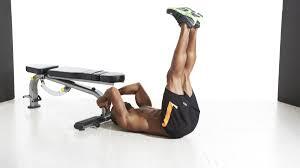
- Why It Works: Leg raises target the lower abs and hip flexors, helping to build strength and stability in the lower core region. This exercise also engages the transverse abdominis.
- How to Do It: Lie on your back with your legs extended straight and your hands under your hips for support. Engage your core and lift your legs toward the ceiling, keeping them straight. Lower your legs back down slowly without letting them touch the ground. Perform 10-15 repetitions.
10. Ab Wheel Rollouts
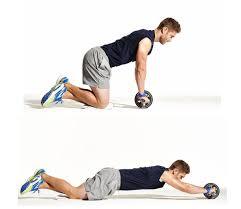
- Why It Works: Ab wheel rollouts are an advanced exercise that challenges the entire core, particularly the rectus abdominis, transverse abdominis, and lower back. It requires a strong core and good form to perform correctly.
- How to Do It: Start on your knees with an ab wheel in your hands. Engage your core and slowly roll the wheel forward, extending your body while keeping your back flat. Go as far as you can without losing control, then roll the wheel back to the starting position. Perform 8-12 repetitions.
Incorporating Core Exercises into Your Routine
For optimal results, incorporate these core exercises into your workout routine 2-3 times per week. You can combine several exercises into a circuit, performing each one for a set amount of time or repetitions with minimal rest between exercises. Aim for 2-3 sets of each exercise, gradually increasing the intensity as your core strength improves.
In addition to specific core exercises, remember that many compound movements, such as squats, deadlifts, and overhead presses, also engage the core muscles. Including these exercises in your strength training routine will further enhance your core stability and strength.
Conclusion
A strong and stable core is essential for overall fitness, injury prevention, and improved performance in both daily activities and athletic pursuits. By incorporating the exercises outlined in this article into your routine, you can develop a powerful core that supports your entire body and helps you achieve your fitness goals.
Whether you’re a beginner or an experienced athlete, focusing on core strength and stability will pay dividends in the long run, improving your posture, balance, and functional strength. Start integrating these exercises into your routine today and enjoy the benefits of a strong, stable, and resilient core.

